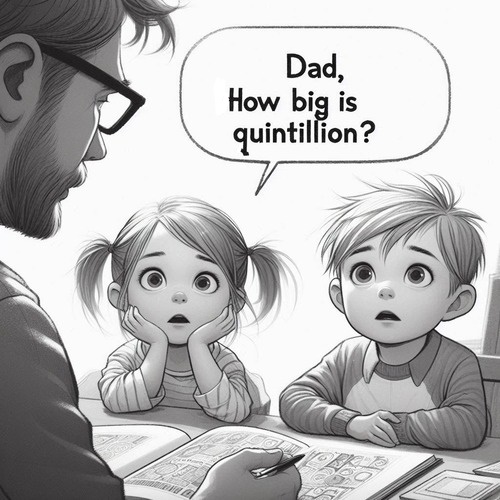Can a Young Earth Explain Impact Craters? Evidence Says Yes
When we look at the moon’s pockmarked surface or visit Arizona’s famous Meteor Crater, we’re witnessing dramatic evidence of cosmic impacts. For decades, secular scientists have used these features to argue for an ancient Earth, with most craters dated at millions or billions of years old. But what if the evidence tells a different story?
UNDERSTANDING IMPACT CRATERS
Impact craters form when meteorites, asteroids, or comets collide with a planetary surface. The explosive energy creates a circular depression, often with a raised rim and central peak. Earth has approximately 190 confirmed impact structures, ranging from small depressions to massive formations like the 180-kilometer Chicxulub crater in Mexico, commonly associated with dinosaur extinction.
Conventional geology assigns ancient ages to most impact craters based primarily on radiometric dating of melted rocks and their position in the geological column. Scientists also point to the apparent rarity of modern impacts and mathematical models. They suggest most large impacts occurred billions of years ago during the ‘Late Heavy Bombardment.’ They argue that if these craters formed recently, we would have abundant historical records of these catastrophic events and their devastating global effects.
THE YOUNG EARTH TIMELINE
Biblical creation science operates within a framework where Earth was created approximately 6,000-10,000 years ago, with Noah’s Flood occurring around 4,500 years ago. The global catastrophe reshaped Earth’s surface in ways that conventional geology attributes to millions of years of slow processes.
But how do impact craters fit into this compressed timeline?
THREE CREATION-BASED EXPLANATIONS
Young Earth Creationist (YEC) scientists have developed several compelling explanations for Earth’s impact features:
Craters from Creation Week: Dr. Danny Faulkner of Answers in Genesis suggests some craters may have formed during the initial creation of celestial bodies. In his 2017 paper An Analysis of Astronomical Aspects of the Hydroplate Theory, Faulkner proposes God may have created the moon with craters already in place, similar to how Adam was created as an adult rather than an infant.
However, Earth’s impact craters show clear evidence of having formed through actual collisions with our existing surface, necessitating other explanations.
Impact Bombardment During the Flood: The most compelling YEC explanation connects most impact craters with Noah’s Flood. Dr Walt Brown’s Hydroplate Theory (updated in his 2021 edition of “In the Beginning”) proposes the Flood began when the “fountains of the great deep burst open” (Genesis 7:11), releasing pressurised subterranean water that launched debris into space.
Much of this material—rocks, ice, and water—would have returned to Earth during and after the Flood year. Brown’s calculations show larger debris would return first, with smaller fragments continuing to fall for centuries afterward. This explains both the catastrophic Flood-era impacts and post-Flood craters recorded in human history.
A 2023 analysis by Dr Timothy Clarey at the Institute for Creation Research examined crater distribution and noted significant correlation between crater locations and Flood-deposited megasequences—supporting the Flood-era impact hypothesis.
Post-Flood Recorded Impacts: Historical records document several impact events within human history. The Kaali crater field in Estonia dates to approximately 1530-1450 BC (after the Flood in YEC chronology). Local folklore preserved accounts of this event for generations.
More recently, the 1908 Tunguska event flattened 830 square miles of Siberian forest without leaving a distinct crater, demonstrating that significant impacts continue in modern times.
SCIENTIFIC EVIDENCE SUPPORTING YOUNG CRATERS
Recent research increasingly challenges the assumed ancient age of impact structures:
- Preservation Problems: Dr Michael Oard’s 2019 study “Incomplete Erosion of Meteorite Impact Craters” highlights how Earth’s active geological processes should have erased most craters over millions of years. Their remarkable preservation suggests much younger ages.
- Soft Sediment Deformation: Many craters show evidence of impact into water-saturated sediments. The Chesapeake Bay impact structure displays features consistent with striking water-laden, unconsolidated sediments during the Flood’s latter stages.
- Rapid Formation Processes: Research by creation geologists Dr Andrew Snelling and John Matthews (2021) demonstrates how catastrophic processes can create in hours or days what conventional geology attributes to millions of years.
- Radiometric Dating Inconsistencies: YEC researchers have documented systematic problems with radiometric dating assumptions. Dr Vernon Cupps’ work shows how the same impact materials often yield wildly different dates depending on the dating method used.
CASE STUDY: THE UPHEAVAL DOME
Utah’s Upheaval Dome offers a fascinating example. While long considered a salt dome formation, evidence now suggests it’s an impact structure. Conventional dating places it at approximately 170 million years old.
However, creation scientists note several features supporting a much younger age:
- The structure cuts through Flood-deposited sedimentary layers
- Minimal erosion despite its location in an area of significant weathering
- Evidence of water-saturated sediments during impact
These observations fit perfectly within a model where the impact occurred during the late stages of the Flood or shortly thereafter.
CONCLUSION: IMPACT CRATERS
Far from being evidence against biblical creation, impact craters provide remarkable support for the young Earth model when properly interpreted. Through pre-Flood, Flood-era, and post-Flood impacts, creation scientists have developed robust explanations that align with both Scripture and observable evidence.
While this field continues to develop, the mounting research suggests impact craters, rather than contradicting biblical chronology, actually strengthen the case for a young Earth shaped by catastrophic processes—exactly as we would expect from reading Genesis.
IMPACT CRATERS: RELATED FAQs
Evolutionists ask: “There are too many craters for a young Earth. How could so many impacts occur in just thousands of years?” The conventional view spreads impacts across billions of years, but evidence suggests concentrated bombardment periods are more likely. Creation scientists propose the breakup of a single large celestial body—possibly related to the “waters above the firmament” mentioned in Genesis—could have produced thousands of impactors during and after the Flood. This catastrophic event would have created a temporary “shooting gallery” in our solar system, explaining the abundance of craters within a biblical timeframe.
- How do creationists explain crater distribution patterns that seem to indicate ancient ages? Crater distribution actually provides compelling evidence for the Flood model. We find a strong correlation between crater locations and Flood-deposited geological features called megasequences. Areas with fewer preserved craters typically show evidence of more recent geological activity—including post-Flood erosion and deposition—that would have erased impact evidence. This pattern is exactly what we would expect if most impacts occurred during or shortly after the global Flood.
- Wouldn’t the energy from numerous impacts have completely destroyed all life on Earth? The biblical Flood already describes a catastrophic destruction of Earth’s surface where only those aboard the Ark survived. Sequential impacts during this already-catastrophic event would contribute to the extensive geological reworking we observe. The Flood’s water layer would have mitigated some impact effects, and post-Flood impacts would have been more scattered and isolated, allowing life to continue while explaining features we see today.
If major impacts happened during human history, why don’t we have more historical records of these events? We actually do have numerous historical accounts of cosmic impacts. Ancient chronicles from diverse cultures describe “fire from heaven,” “stars falling,” and similar phenomena consistent with meteor impacts. The biblical account of Sodom and Gomorrah’s destruction includes details remarkably similar to an airburst impact event. Many impacts would have occurred in unpopulated regions or oceans, and smaller communities experiencing impacts might not have survived to record them.
- How do creation scientists explain impact craters on other planets and moons if they formed recently? The same cosmic catastrophe that sent impactors toward Earth would have affected the entire solar system. Creation astronomers like Dr Danny Faulkner suggest that while God created celestial bodies intact and functional, subsequent natural processes—including impacts—have modified their surfaces. The concentration of craters on surfaces like our moon and Mercury actually supports a catastrophic bombardment period rather than constant, slow accumulation over billions of years.
- What about tektites and other impact-related materials found far from their source craters? Tektites—small glassy objects formed from melted rock during impacts—present no problem for the Flood model. The combination of powerful impacts and the global Flood’s dynamic water movements provides an excellent mechanism for distributing impact materials worldwide. Creation scientists suggest that the Flood’s unique conditions—including supersonic water movements, massive tsunamis, and atmospheric disturbances—explain the extensive distribution patterns of tektites better than conventional models.
How do creationists explain the Chicxulub crater and its connection to dinosaur extinction? Creation scientists recognise the Chicxulub impact as real but interpret it within the Flood timeline rather than 66 million years ago. The impact likely occurred during the later stages of the Flood year, contributing to the catastrophic conditions. Dinosaur fossils found below the “impact layer” represent creatures buried earlier during the Flood, not those living millions of years before the impact. This explains why we find soft tissue preservation in dinosaur remains—they were buried thousands, not millions, of years ago.
IMPACT CRATERS: OUR RELATED POSTS
- The Sun’s Age: Is It Really A Showstopper for A Young Earth?
- Age of the Earth Discussions: How’s Helium a Gamechanger?
- 6000 Years Or 4.5 Billion: How Old is the Earth Really?
- Do Tree Rings Really Prove the Earth Is Old?
- Mt St Helens: How One Volcano Challenges Geological Timescales
- Population Math: The Overlooked Evidence for a Young Earth
Editor's Pick

The Throne-Room Vision: Who Did Isaiah See?
The scene is unforgettable: Isaiah stands in the temple, and suddenly the veil between heaven and earth tears open. He [...]

The Angel of the Lord: Can We Be Certain It Was Christ All Along?
Throughout the Old Testament, a mysterious figure appears: the Angel of the LORD. He speaks as God, bears God’s name, [...]
SUPPORT US:
Feel the Holy Spirit's gentle nudge to partner with us?
Donate Online:
Account Name: TRUTHS TO DIE FOR FOUNDATION
Account Number: 10243565459
Bank IFSC: IDFB0043391
Bank Name: IDFC FIRST BANK






